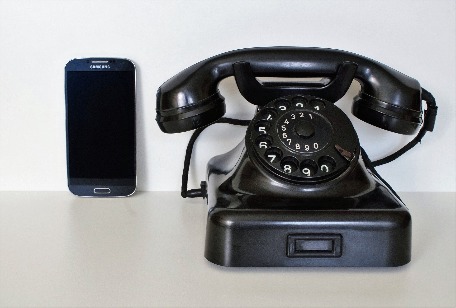
Remember the good old days of mobile working?
That golden time when all deliveries were made by happy, chirpy, whistling workers and customers weren’t too bothered if they turned up a couple of days late.
Well, obviously this never existed but, thanks to digital technology, the way we manage mobile services has certainly changed a lot over the past 20 years.
So let’s rewind the Betamax tape and take a quick trip back to the 1990s - to the pre-digital era of mobile working.
This was a time when the Internet existed but only around 0.4% of the population could access it. So while computers began appearing in businesses, they were really limited in what they could do.
It was still very much a paper-based world - fax machines, photocopiers, printers and stacks of paperwork. Here’s what life was like for your typical mobile service provider:
Business communications
Just about everything a mobile worker needed in the 90s was provided in the form of paper. Paper forms, worksheets, schedules, reports, site plans - all having to be carried around by fieldworkers.
All of the paper documentation would need printing out, picking up and dropping off. A clipboard and pen would collect job information which would need to be manually processed by the back-office team.
Mobile phones were around but still way too clunky, expensive and unreliable for anyone other than business executives. The one glimmer of technological light was provided by the pager.
These nifty devices were particularly popular with mobile service providers. But with such a limited amount of text, the most common messages were rather unhelpful instructions to ‘phone office!’.
Storing information
It’s not surprising that paper usage reached its peak during the 90s. This was a time when office computers and printers were great at splurging out mounds of paperwork but not so great at storing info.
Some of the larger businesses began experimenting with disk storage systems but the most common way to store stuff was still cupboards, drawers and filing cabinets stuffed full of paper documents and reports.
It was only in the 2000s and the availability of servers that digital storage became more commonplace within workplaces.
Getting around
The first sat navs had started to appear in the mid-90s but it wasn’t until the 2000s that they really became common for commercial vehicles.
So mobile workers in the 90s still relied on a vehicle glove box full of suitably battered copies of A-Z street maps. Having to stop to ask for directions and navigate journeys across multiple map pages made things that bit more…challenging.
The Ford Transit van was still the most popular form of working vehicle with drivers enjoying all of the latest mod-cons - coin holders, electric windows and an assortment of annoying anti-theft devices.
What’s actually changed?
What’s remarkable is not so much how things have changed - it’s how much has stayed the same. Take a look around the office of a typical mobile service business today and you are likely to still see bundles of paperwork and printouts.
Paper-based ways of working are still commonplace for mobile service companies. The ‘Driving Change’ report, commissioned by MyMobileWorkers, found that more than a third (35%) of UK highway companies still use paper-based management methods.
This is despite the huge benefits that are delivered by a cloud-based approach to mobile workforce management. While this technology used to be accessible to only the biggest players, it’s now available to mobile business of all shapes and sizes.
You can find our more about the benefits of switching to a cloud-based approach here.
So while management methods may have been slow to change, the expectations of customers and clients certainly have not. Working practices can’t remain in the past while customer expectations are firmly based on today's digitally connected, on-demand world.


